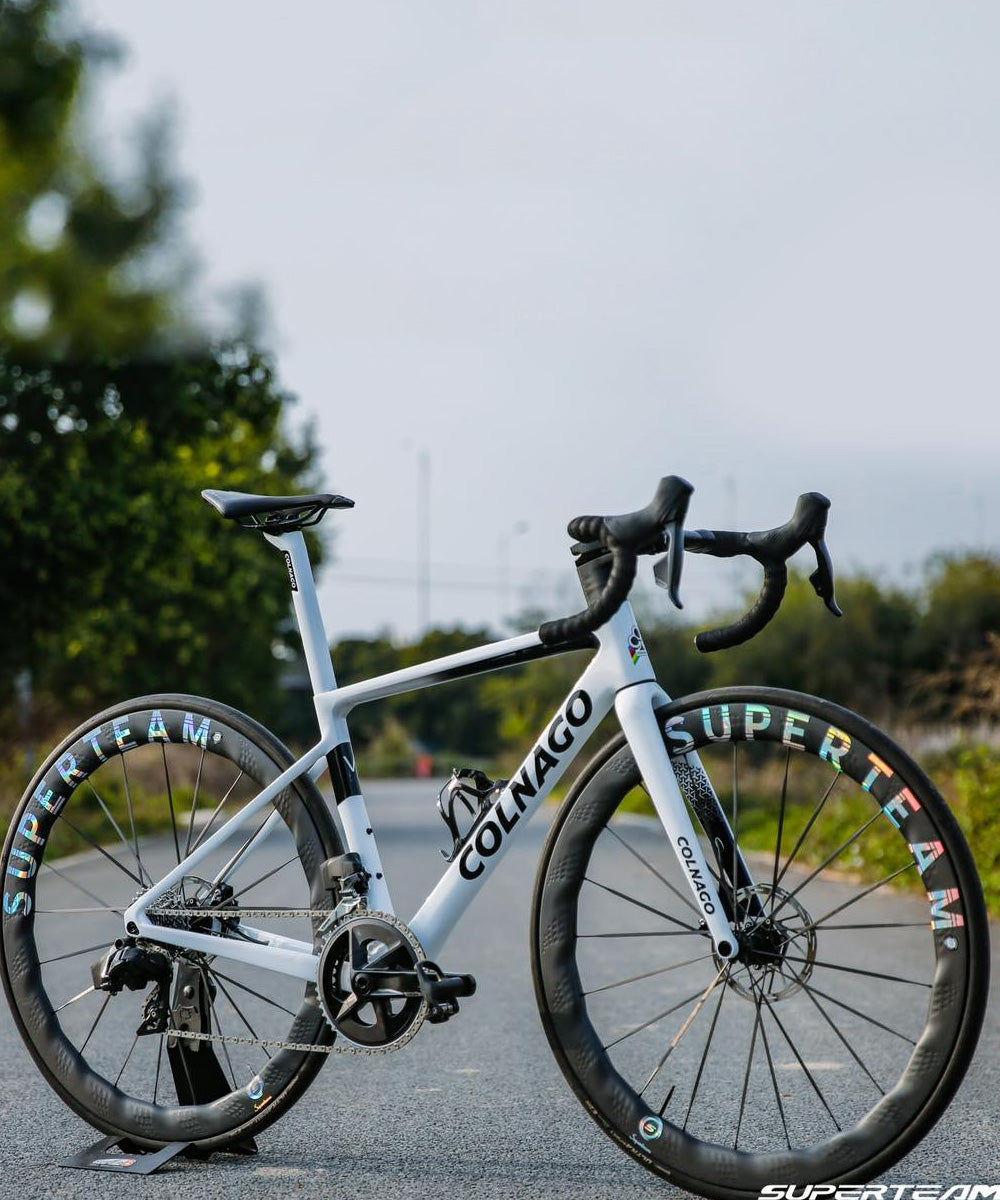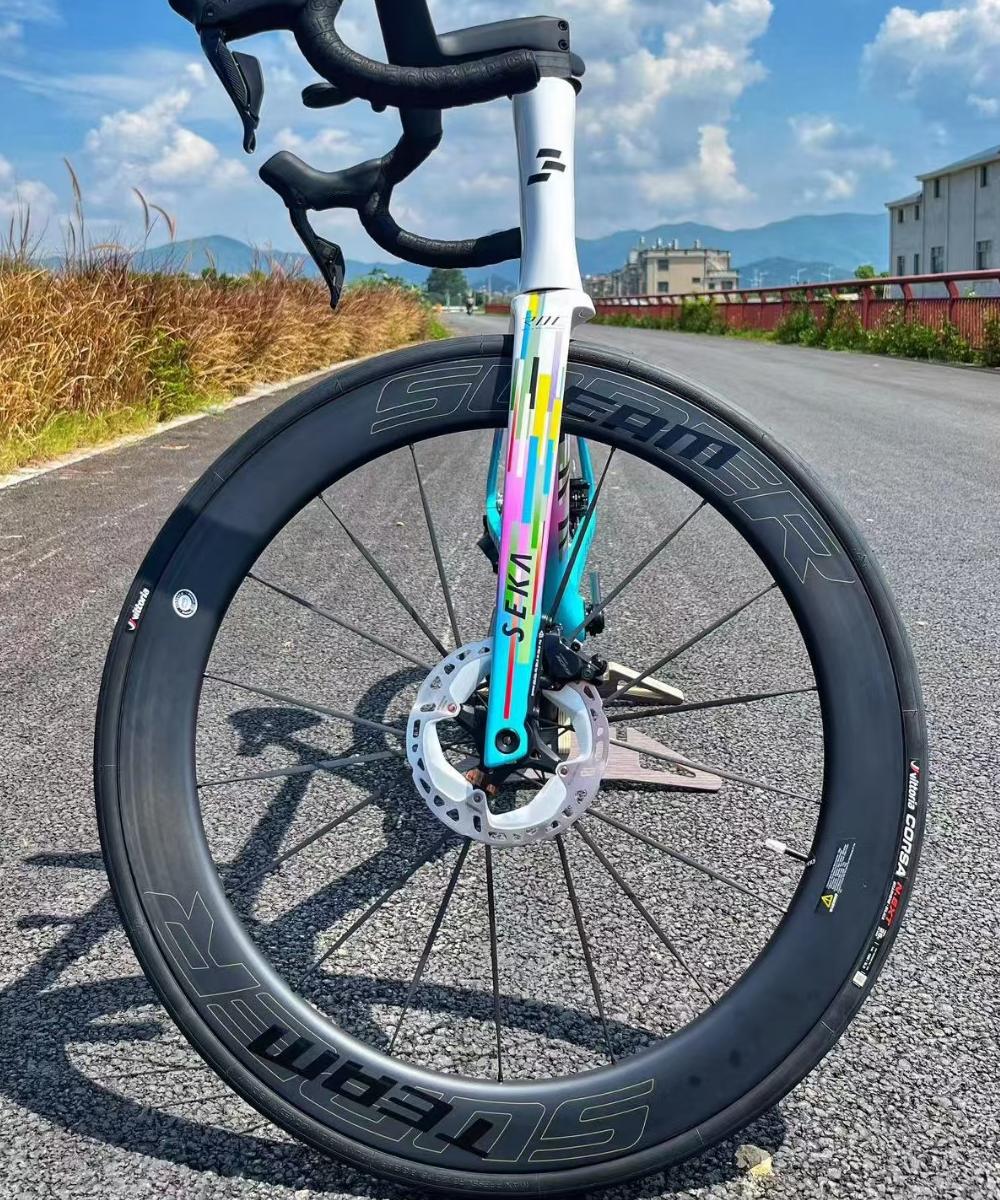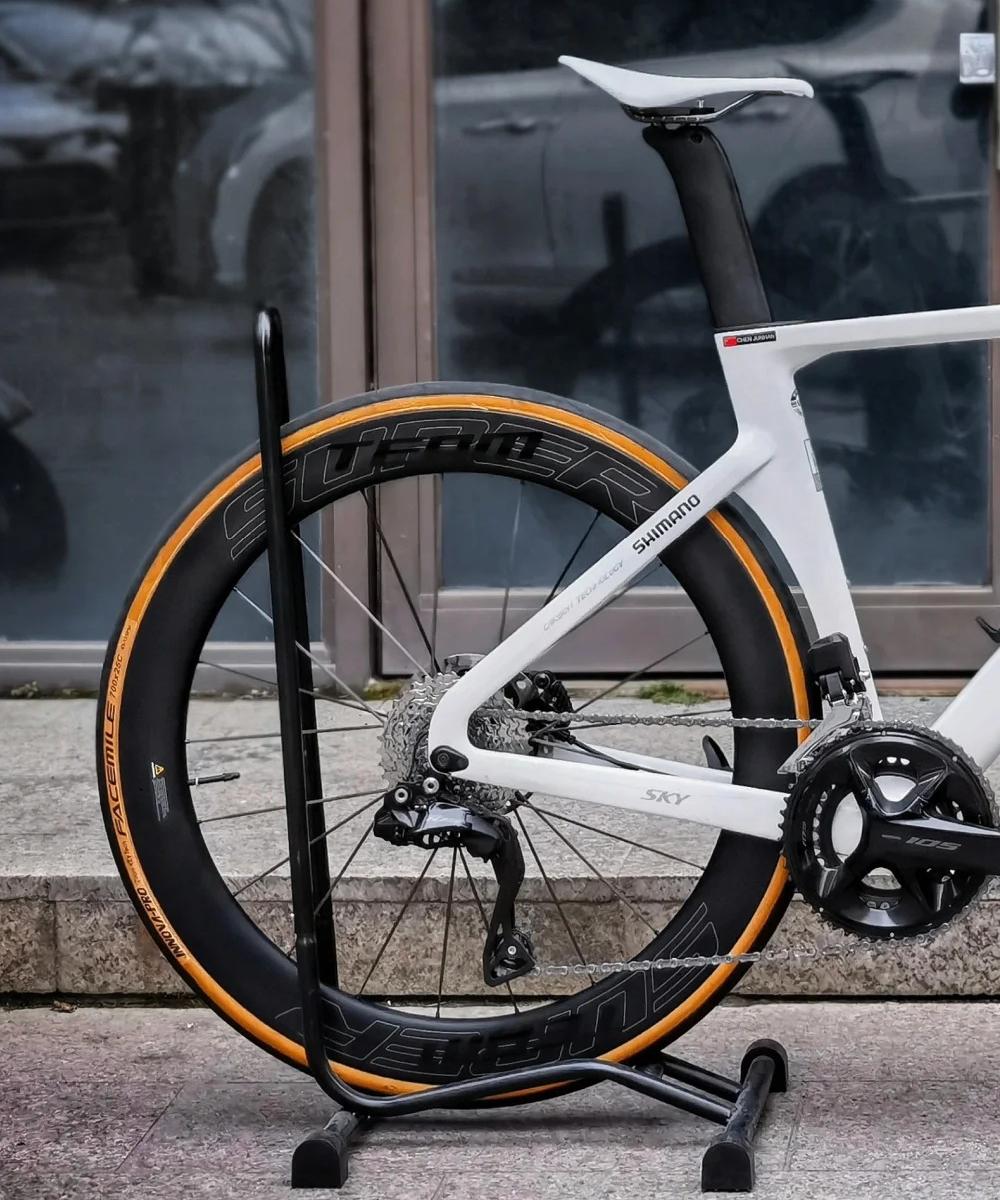How Sidewall Flex Impacts Braking Performance on Carbon Gravel Wheels
Introduction
When it comes to gravel cycling on carbon wheels, braking performance is influenced by more than just pads, rotors, or rim surface treatments. One often-overlooked factor is sidewall flex. On rough terrain, the way a tire’s sidewall deforms under load directly affects braking consistency, traction, and rim durability. Understanding this interaction helps riders choose the right tire-rim setup for better control and safety.
What Is Sidewall Flex?
Sidewall flex refers to the lateral and vertical deformation of the tire’s sidewall when subjected to braking forces, cornering loads, and terrain irregularities. On gravel:
Vertical Flex: Compresses under braking, expanding the contact patch.
Lateral Flex: Allows the tire to roll slightly on the rim under sideways loads.
Dynamic Flex: The constant micro-adjustment of the casing on rough surfaces.
How Sidewall Flex Affects Braking
Traction and Grip
More flex increases the tire’s contact area, enhancing grip during braking.
Excessive flex, however, can cause squirm, leading to delayed brake response.
Braking Modulation
Controlled sidewall flex smooths braking forces, preventing abrupt skids.
Stiff sidewalls may cause a sudden loss of grip on loose gravel.
Heat Transfer to the Rim
On rim brake setups, more flex allows micro-slippage, reducing localized heat buildup.
Too much flex, however, increases stress on the rim bead, raising the risk of fatigue.
Stability on Uneven Terrain
Sidewall compliance allows tires to conform to gravel surfaces, maintaining braking traction.
Overly stiff casings tend to bounce, reducing braking efficiency and increasing stopping distance.
Balancing Flex for Carbon Gravel Wheels
Tire Pressure
Lower pressures increase sidewall flex, improving grip but risking rim strikes.
Higher pressures stiffen the sidewall, improving responsiveness but reducing compliance.
Casing Construction
Supple casings with protective layers (e.g., bead-to-bead puncture protection) strike a balance between flex and durability.
Rim-Tire Match
Wider rims better support sidewalls, reducing unwanted lateral roll while maintaining controlled vertical flex.
Practical Recommendations
Choose Tires Wisely: Look for gravel-specific casings that balance suppleness and protection.
Dial Tire Pressure: Adjust based on rider weight, terrain, and rim width to optimize braking traction.
Inspect Regularly: Excessive sidewall wear can compromise braking consistency and rim safety.
Prioritize Modulation Over Maximum Grip: Smooth braking is more effective than grabbing hard in loose terrain.
Conclusion
Sidewall flex plays a critical but subtle role in braking performance on carbon gravel wheels. The right amount of compliance increases traction, improves modulation, and protects rims from heat and impact stress. Too much or too little flex, however, compromises control and safety. By tuning tire pressure, casing construction, and rim pairing, riders can harness sidewall flex to maximize braking efficiency on unpredictable gravel terrain.




